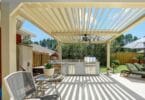Cities have emerged as the dominant form of human settlement, and they are significant economic and environmental actors. Since 1950, the global urban population has increased by roughly five times from 0.7 billion to 3.9 billion in 2014. It is expected to grow by another 60 per-cent by 2050 when 6.3 billion people are projected to live in urban settlements.
In 2011 India’s 377 million suburban residents accounted for about 32% of countries total population; however, the number of city dwellers could search to 900 million by 2050
. With most of the cities in India are still undergoing modernization, It is critical that this future urban growth not follow the traditional path of carbon-intensive development. Sustainability towards integrating international best practices with domestic.
The tidal flow of population is not, merely due to the “pull” of city lights, most of it is distress migration from villages to urban centers. The marginal earners (landless laborers, etc.) whose existence can no longer be sustained by rural areas.
Most of the infrastructure needed to commentate this in enlarge urban population, as well as to meet the needs of today’s urban poor who still lack minimum facilities, is yet to be built. The question arises: How can we increase the absorptive capacity of cities?
Sustainable Cities
Since there is a sharp limit to the number of jobs which can be generated in industry, the vast majority of the migrants to cities will have to find work in tertiary and bazaar activities. Any intervention we make in the urban space, therefore, should aim to increase economic activity in these areas. As income level rise and if current trends continue the pressure on already congested roads will be enormous.
The housing also is required for the estimated 17.4 % of urban households living in slums as well as for new migrants and growing population overall. This pressure is significant, but they can be seen as opportunities to build sustainable cities rather than retrofit cities that have most of the infrastructure in place.
In searching for sustainable solutions looking at traditional solutions is also important. Solutions are context specific and culture-specific, so what might be good in one place may not be suitable for Elsewhere. The challenge is to search for the right solution for a particular situation.
To find the right strategies we must try with an overview; we must of necessity examine the entire system and try to identify those living patterns and those lifestyles, which are optimal in their totality – including roads, services, schools, transportation systems, social facilities and housing units.
Smart Sustainable Cities
The Smart cities mission launched by the Prime Minister focuses on projects in the area of water and sewage greenery and open space and nonpolluting transport (transit walking and cycling). The housing for all initiatives addresses the development of affordable housing, rehabilitation of slums, credit and subsidy schemes for building or improving housing units.
The cities like Ahmedabad and Pune both have an old core city area, a modern city that has evolved around it and emerging suburban and Pre-urban neighborhood. The old city area is a densely populated space characterized by narrow streets, houses with inner courtyard, climate responsive design and integration of workspaces and residences. The roads, roofs and the court has a design to facilitate community interaction, celebration as much as the old city is an excellent example of an urban ecosystem that integrates social, cultural, economic and environmental aspects offering lessons that are relevant to sustainability in the modern context.
Ahmadabad
The historic, cultural, aesthetic, economic and community elements are enduring qualities that make cities livable, and that will be important for the cities of the future. Unfortunately, modernization of urban core leads to the destruction of these urban forms. When we start designing for cars, not for people, when we to raze old buildings, pool land parcels and revitalize economic activities then we begin to destruct the beautiful scenario of the past.
The challenge is not only to preserve The Identity and livability of historical cities but also to recognize their relevance in a leapfrog context. Innovation such as public bicycling schemes combined with congestion charging can also help address traffic issues while retaining walk-able / cyclical streets.
Promoting density, deceleration, pedestrianization core areas of cities (closing Streets for motorized traffic entirely or on a particular day) building supporting infrastructure. In the United States, Portland, Oregon has promoted the concept of “20 minutes neighborhoods” to enable residents to meet all there in on work needs by walking or cycling. A mix of conservation, renewal, and replacement of buildings can also help retain the built form.
Whenever a redevelopment project emerges which considers removing the bazaar, street vendors, a more sustainable solution can develop and the vendors can cooperate with the new design proposal. The new design proposal will help to improve the organization and will protect their lives while maintaining neighborhood streets as multi-use areas, producer for activities such as walking and cycling, vending and small business arrangements.
Check this out: A laneway houses or coach house could be the perfect solution for you. Silvercrest Custom Homes & Renovations will help you maximize the potential of your laneway house Vancouver to give you the additional space that you need.
Summery:
Rearranging the scenery of India is a process of choice. It involves picking appropriately from a range of options, from the traditional to the most innovative and contemporary. It involves adapting lessons from elsewhere and developing context-specific solutions. It requires continuous feedback and inability to change when things do not work as well as finding the optimal solutions in a cultural context.








[…] uses of reclaimed materials. Salvaged wood, repurposed metals, and second-hand furniture items can add character to affordable homes while minimizing […]